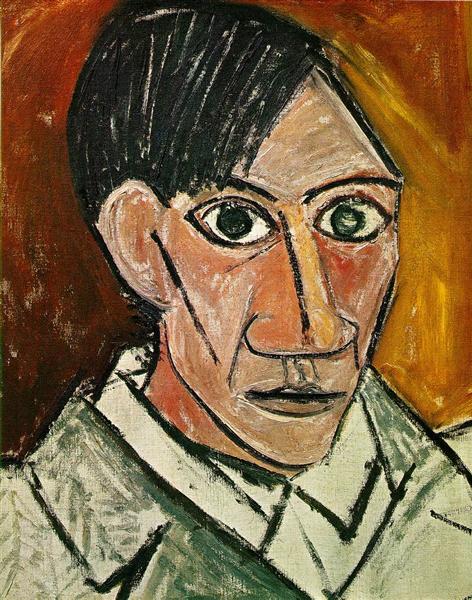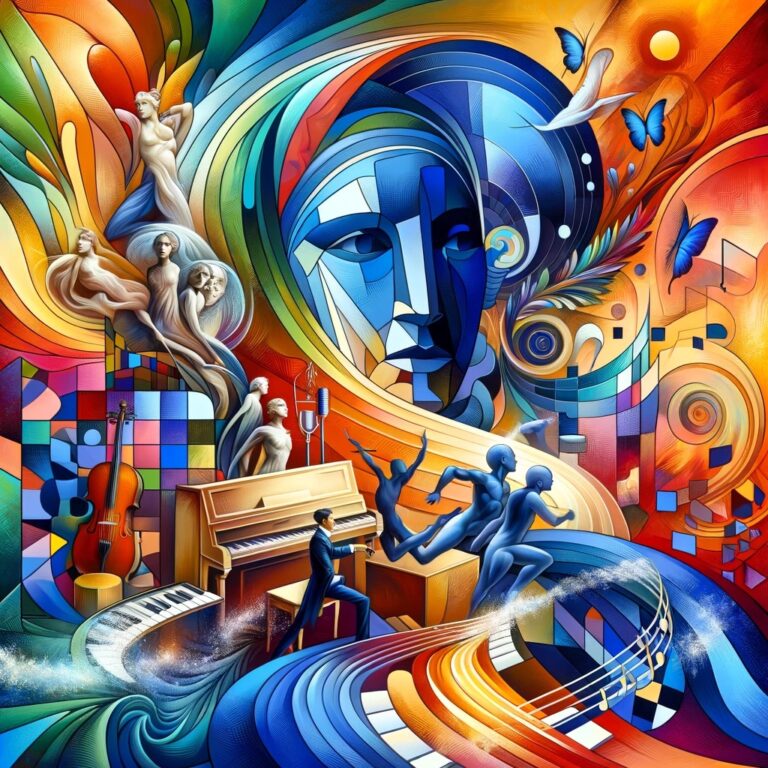The 10 most famous artists of all time We Love Art has asked many of the thousands of Art Lover’s who have attended our events or experienced the We Love Artbox with Streamed Class in their homes: “Who is your favourite artist?”.
The 10 most famous artists of all time
The beautiful thing about art is that it is subjective, so one may love the Mona Lisa whilst be confused at Magritte’s pipe. Or alternatively one may be bored of the Mona Lisa’s wry smile whilst the questions raised by Magritte may be compelling. Who do you think is the most famous artist ever? Do you agree with our list?
1. Leonardo Da Vinci (1452 – 1519)
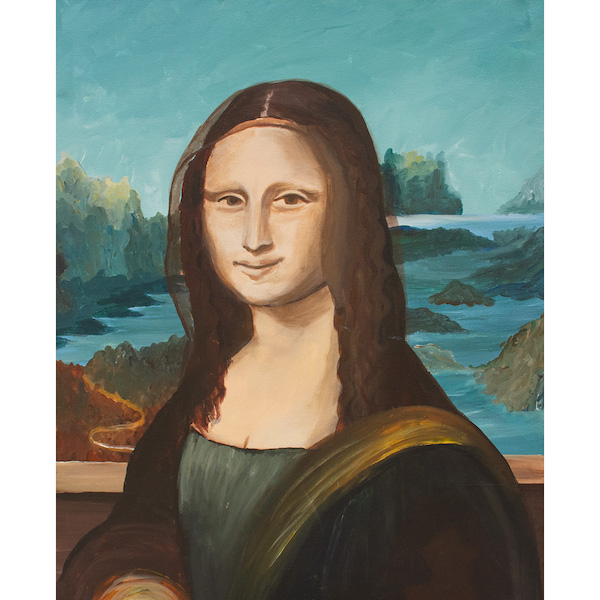
https://youtube.com/watch?v=oRRVSflKdro%3Fcontrols%3D1%26rel%3D0%26playsinline%3D0%26modestbranding%3D0%26autoplay%3D0%26enablejsapi%3D1%26origin%3Dhttps%253A%252F%252Fwww.weloveart.com%26widgetid%3D1
The Mona Lisa created by a member of We Love Art community from the Mona Lisa Artbox.
Leonardo da Vinci, probably the most important Renaissance artist, is widely recognized as the most famous artist of all time. He’s the genius behind the iconic Mona Lisa painting masterpiece, after all. It was painted sometime between 1503 and 1519 when Leonardo was living in Florence, and it now hangs in the Louvre Museum, in Paris, where it remained an object of pilgrimage in the 21st century. The sitter’s mysterious smile and her unproven identity have made the painting a source of ongoing investigation and fascination. Da Vinci also created a background with aerial views and a beautiful landscape but muted from the vibrant lightness of the subject’s face and hands. The technique Da Vinci used in executing the painting left behind no visible brush marks, something that was said to make any master painter lose heart. It is truly a masterpiece.
The Mona Lisa is an oil painting, with a cottonwood panel as the surface. It is unusual in that most paintings are commissioned as oil on canvas, but the cottonwood panel is part of what has attributed to the fame of the painting. Because of the medium used for the image, the Mona Lisa has survived for six centuries without ever having been restored–a trait very unusual when considering the time period of the piece.
Among his famous masterpieces, there are also the Last Supper and The Lady with an Ermine. The Last Supper is the most reproduced religious painting of all time and his Vitruvian Man drawing is regarded as a cultural icon as well.
Even nowadays, his works are not fully understood and he still serves as inspiration for many, many aspiring artists.
Beyond painting, although he had no formal academic training, da Vinci was also a scientist and inventor and he created plenty of drawings of the human body and many modern technologies found in the world today. Leonardo’s paintings and preparatory drawings together with his notebooks, which contain sketches, scientific diagrams, and his thoughts on the nature of painting compose a contribution to later generations of artists.
2. Vincent Van Gogh (1853 – 1890)
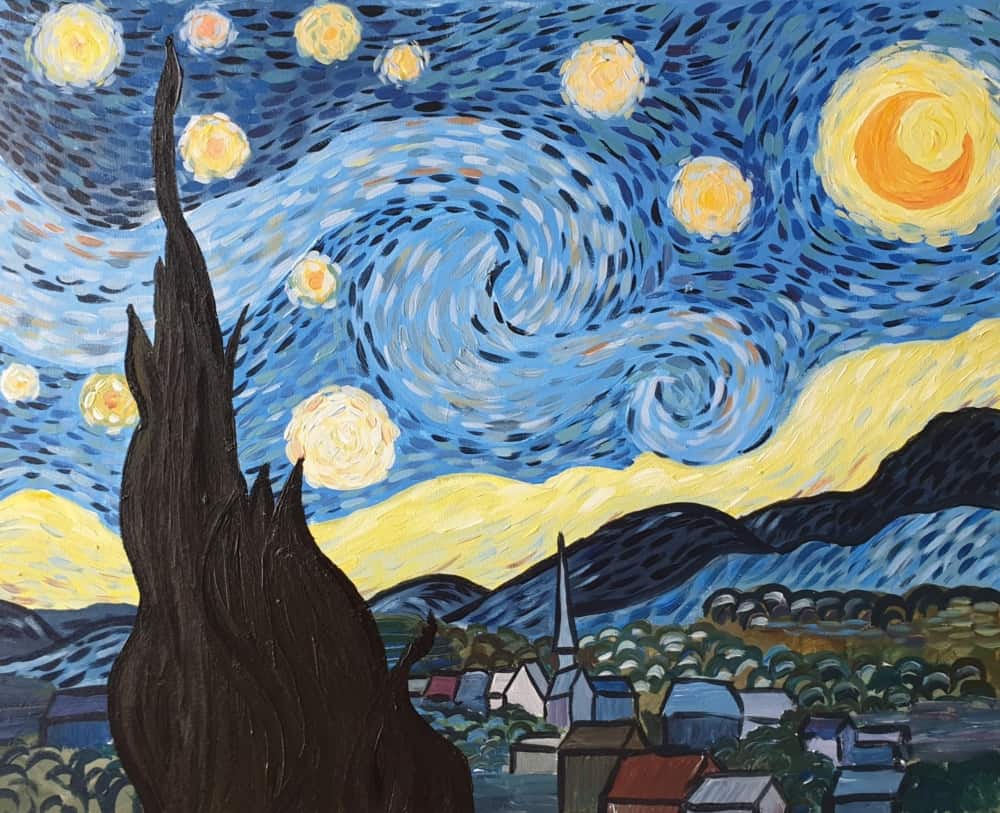
https://youtube.com/watch?v=2OLs9v5eisU%3Fcontrols%3D1%26rel%3D0%26playsinline%3D0%26modestbranding%3D0%26autoplay%3D0%26enablejsapi%3D1%26origin%3Dhttps%253A%252F%252Fwww.weloveart.com%26widgetid%3D3
Starry Night created
Vincent Willem van Gogh was a Dutch post-impressionist painter who is among the most famous and influential figures in the history of Western art. In just over a decade, he created about 2,100 artworks, including around 860 oil paintings, most of which date from the last two years of his life. They include landscapes, still lifes, portraits and self-portraits, and are characterised by bold colours and dramatic, impulsive and expressive brushwork that contributed to the foundations of modern art. His paintings include: Starry Night, Cafe Terrace at Night, Sunflowers, Self Portrait and many more.
He painted Starry Night in 1889 during his stay at the asylum of Saint-Paul-de-Mausole near Saint-Rémy-de-Provence. Blue dominates the painting, blending hills into the sky. The little village lays at the base in the painting in browns, greys, and blues. Even though each building is clearly outlined in black, the yellow and white of the stars and the moon stand out against the sky, drawing the eyes to the sky. They are the big attention grabber of the painting.
The 10 most famous artists of all time
Starry Night is one of the most recognised pieces of art in the world. It is absolutely everywhere, too. It can be seen on coffee, mugs, t-shirts, towels, magnets, etc. Honestly, it sometimes feels as if the painting’s fame has exceeded that of its creator. It is a magnificent piece of art. That Starry Night resonates with so many people is a testament to how its beauty is timeless and universal.
He was not commercially successful, and his suicide at 37 came after years of mental illness, depression and poverty. The name of van Gogh was virtually unknown when he killed himself: only one article about him had appeared during his lifetime. However, within the span of a century, van Gogh has become perhaps the most recognised painter of all time. The unprecedented prices his works have attained through auction and the attention paid to forgery scandals have only increased van Gogh’s stature in the public imagination.
3. Pablo Picasso (1881 – 1973)
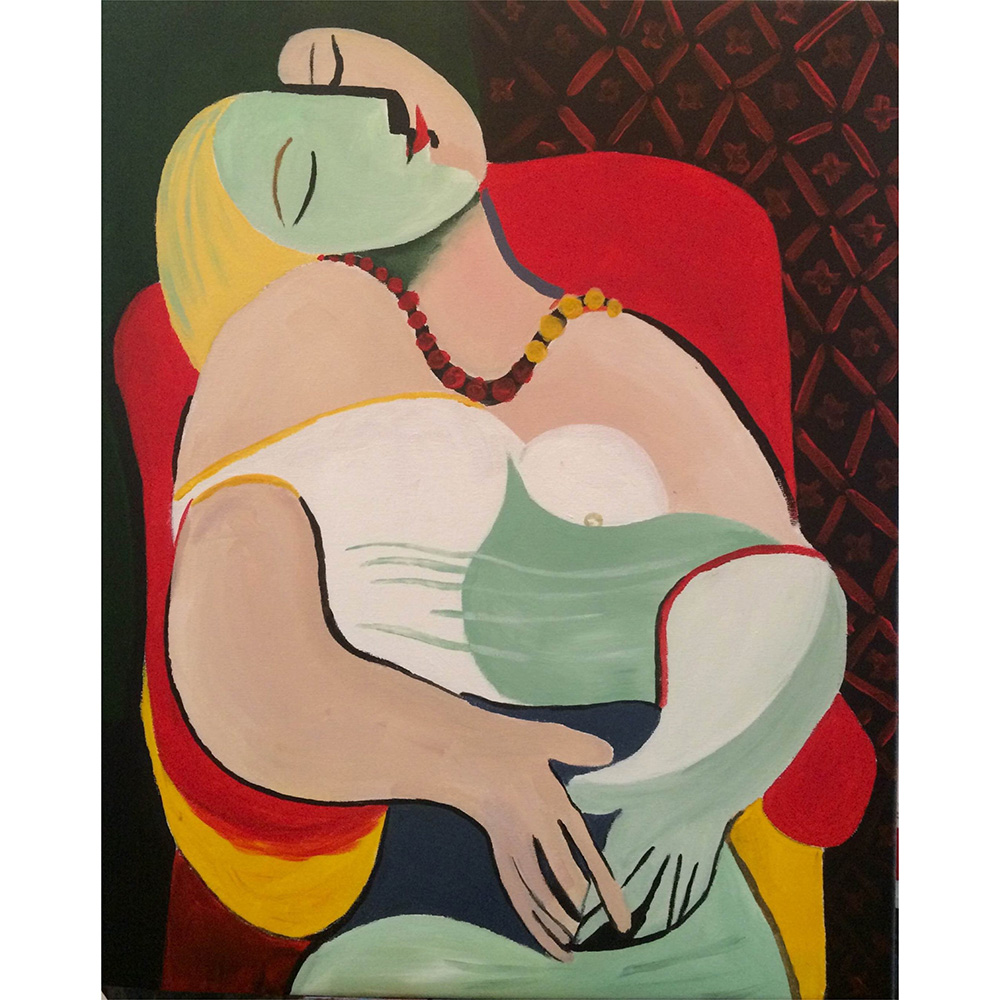
Pablo Ruiz Picasso was a Spanish painter, sculptor, printmaker, ceramicist and theatre designer who spent most of his adult life in France. The son of an academic painter, José Ruiz Blanco, he began to draw at an early age. In 1895, the family moved to Barcelona, and Picasso studied there at La Lonja, the academy of fine arts. Regarded as one of the most influential artists of the 20th century, he is known for co-founding the Cubist movement, the invention of constructed sculpture, the co-invention of collage, and for the wide variety of styles that he helped develop and explore.
His style developed from the Blue Period to the Rose Period to the pivotal work Les Demoiselles d’Avignon (1907), and the subsequent evolution of Cubism. Picasso’s collaboration on ballet and theatrical productions began in 1916. Soon thereafter, his work was characterised by neoclassicism and a renewed interest in drawing and figural representation. He was exceptionally prolific throughout his long lifetime. The total number of artworks he produced has been estimated at 50,000, comprising 1,885 paintings; 1,228 sculptures; 2,880 ceramics, roughly 12,000 drawings, many thousands of prints, and numerous tapestries and rugs.
The 10 most famous artists of all time
The medium in which Picasso made his most important contribution was painting. In his paintings, Picasso used colour as an expressive element, but relied on drawing rather than subtleties of colour to create form and space.
Among his most famous works are the proto-Cubist Les Demoiselles d’Avignon (1907), and Guernica (1937), a dramatic portrayal of the bombing of Guernica by German and Italian airforces during the Spanish Civil War.
Picasso achieved universal renown and immense fortune for his revolutionary artistic accomplishments and became one of the best-known figures in 20th-century art.
In 1961, the artist married Jacqueline Roque, and they moved to Mougins. There Picasso continued his prolific work in painting, drawing, prints, ceramics, and sculpture until his death April 8, 1973.
4. Claude Monet (1840 – 1926)
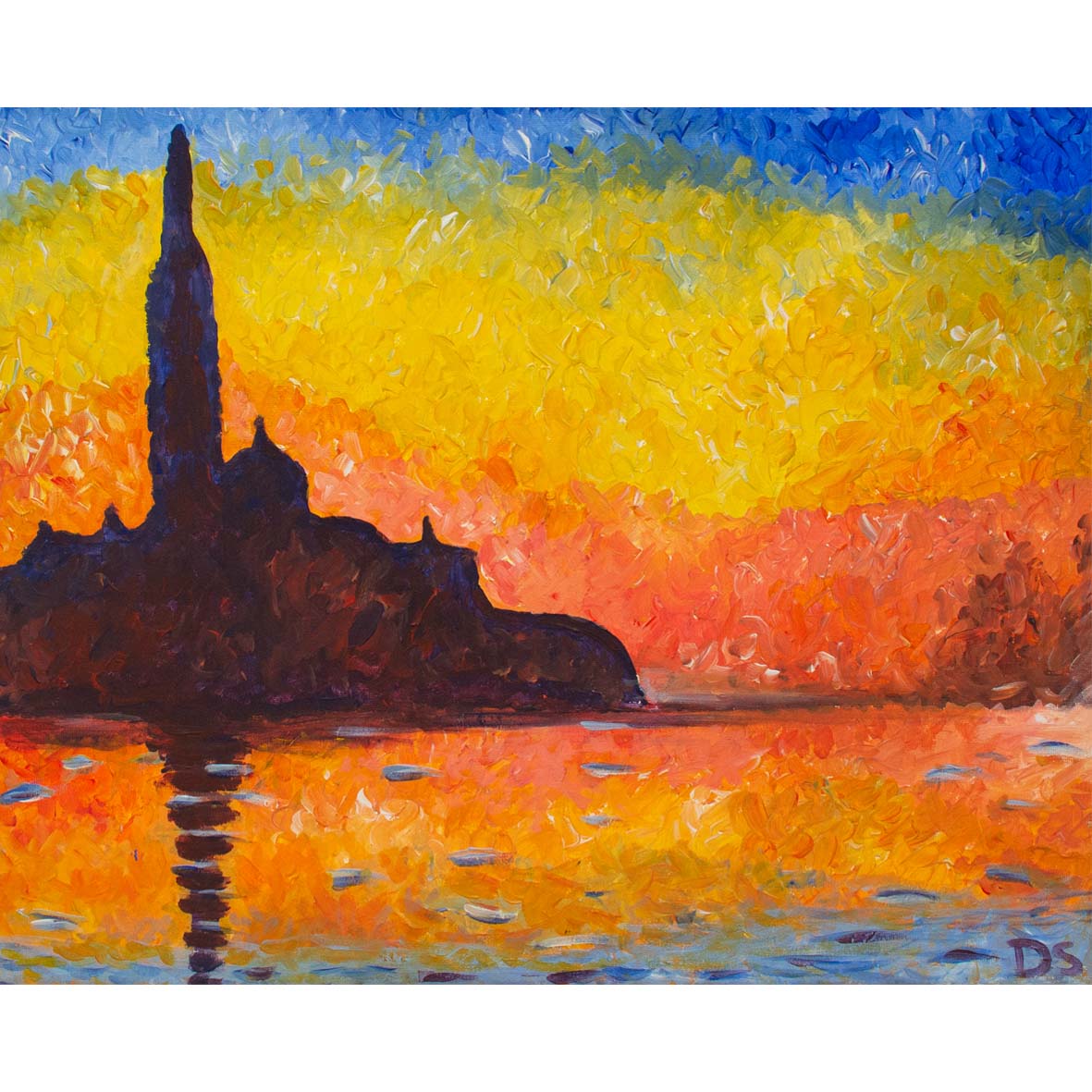
Oscar-Claude Monet was a French painter and a founder of French Impressionist painting. When Claude, the eldest son of Adolphe Monet, a grocer, was five years old, the family moved to the Normandy coast, near Le Havre, where his father took over the management of his family’s thriving ship-chandlering and grocery business. This event has more than biographical significance, for it was Monet’s childhood, spent along the beaches, and the intimate knowledge he gained of the sea and the rapidly shifting Norman weather, that would one day give rise to his fresh vision of nature. By the age of 15, Monet had made something of a name for himself with his charcoal caricatures of various Le Havre locals. The pieces, which he sold for 10-20 francs each, were signed “O. Monet” (His first name is Oscar; Claude is his middle name).
In 1861, at the age of twenty, Monet was drafted into he First Regiment of African Light Cavalry. His father, despite having the means, declined to purchase the 2,500 franc exemption from conscription when Monet refused to give up painting. Monet served for one year in Algiers until he contracted typhoid; his aunt then stepped in to remove him from the army on condition that he would complete a formal art course. While no works from his time in Algeria survive, Monet later reflected that “the impressions of light and colour that I received there…contained the germ of my future researches.”
He was the most consistent and prolific practitioner of the Impressionist philosophy of expressing one’s perceptions before nature, especially as applied to plein air landscape painting (painting outdoors). The term “Impressionism” is derived from the title of his painting Impression, (Impression, Sunrise), which was exhibited in 1874 in the first of the independent exhibitions mounted by Monet and his associates as an alternative to the Salon de Paris.
Monet’s ambition of documenting the French countryside led him to adopt a method of painting the same scene many times in order to capture the changing of light and the passing of the seasons. His long career as a painter was spent in the pursuit of this aim.
The 10 most famous artists of all time
From 1883, Monet lived in Giverny, where he purchased a house and property and began a vast landscaping project which included lily ponds that would become the subjects of his best-known works. He began painting the water lilies in 1899, first in vertical views with a Japanese bridge as a central feature and later in the series of large-scale paintings that was to occupy him continuously for the next 20 years of his life.
Monet died of lung disease on December 5, 1926 at the age of 86. According to his wishes, he had a small and simple funeral.
5. Johannes Vermeer (1632 – 1675)
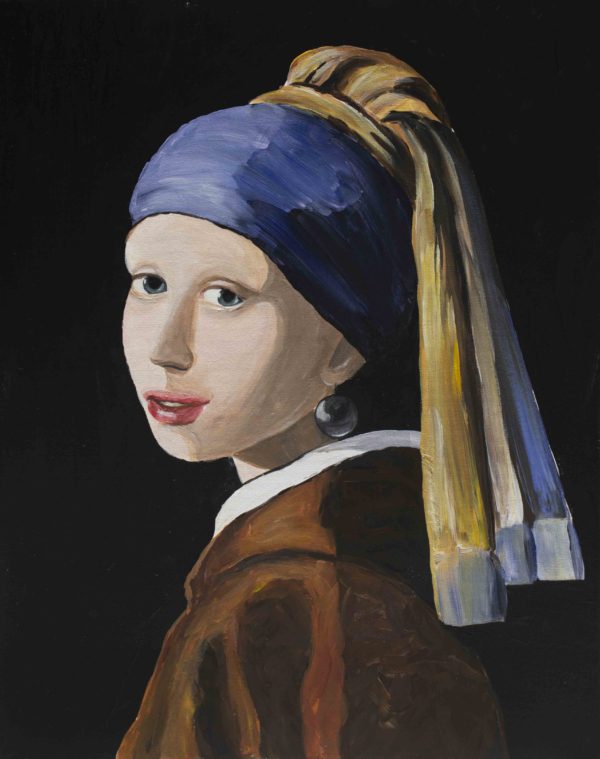
https://youtube.com/watch?v=cJgeXAsIFHE%3Fcontrols%3D1%26rel%3D0%26playsinline%3D0%26modestbranding%3D0%26autoplay%3D0%26enablejsapi%3D1%26origin%3Dhttps%253A%252F%252Fwww.weloveart.com%26widgetid%3D9
Girl with a Pearl Earring
Johannes Vermeer was a Dutch Baroque Period painter who specialised in domestic interior scenes of middle class life. Among his most famous works are the Girl With a Pearl Earring, The Milkmaid and View of Delft. During his lifetime, he was a moderately successful provincial genre painter, recognised in Delft and The Hague. Nonetheless, he produced relatively few paintings and evidently was not wealthy, leaving his wife and children in debt at his death.
Vermeer worked slowly and with great care, and frequently used very expensive pigments. He is particularly renowned for his masterly treatment and use of light in his work.
“Almost all his paintings,” Hans Koningsberger wrote, “are apparently set in two smallish rooms in his house in Delft; they show the same furniture and decorations in various arrangements and they often portray the same people, mostly women.”
Beginning in the late 1650s and lasting over the course of about one decade—a remarkably brief period of productivity, given the enormity of his reputation—Vermeer would create many of his greatest paintings, most of them interior scenes. No other contemporary Dutch artist created scenes with such luminosity or purity of colour, and no other painter’s work was infused with a comparable sense of timelessness and human dignity.
His modest celebrity gave way to obscurity after his death. He was barely mentioned in Arnold Houbraken‘s major source book on 17th-century Dutch painting (Grand Theatre of Dutch Painters and Women Artists) and was thus omitted from subsequent surveys of Dutch art for nearly two centuries. In the 19th century, Vermeer was rediscovered by Gustav Friedrich Waagen and Théophile Thoré-Bürger, who published an essay attributing 66 pictures to him, although only 34 paintings are universally attributed to him today.Since that time, Vermeer’s reputation has grown, and he is now acknowledged as one of the greatest painters of the Dutch Golden Age.
The 10 most famous artists of all time
Similar to other major Dutch Golden Age artists such as Frans Hals and Rembrandt, Vermeer never went abroad. Also, like Rembrandt, he was an avid art collector and dealer.
6. Edvard Munch (1863 – 1944)
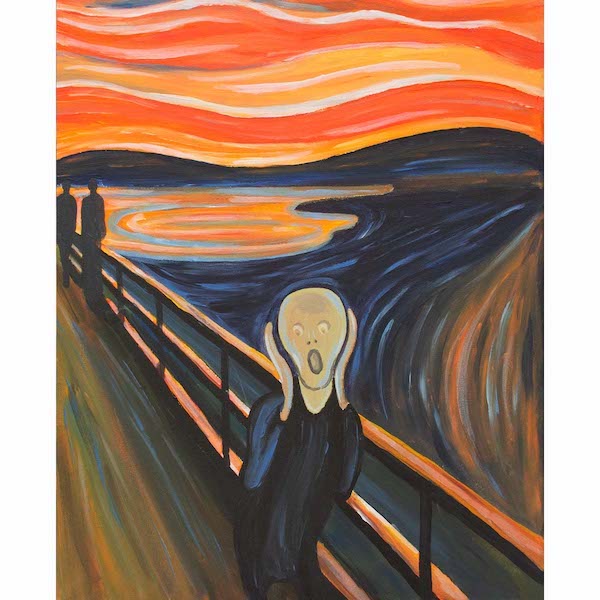
https://youtube.com/watch?v=5C3HrazvQJs%3Fcontrols%3D1%26rel%3D0%26playsinline%3D0%26modestbranding%3D0%26autoplay%3D0%26enablejsapi%3D1%26origin%3Dhttps%253A%252F%252Fwww.weloveart.com%26widgetid%3D11
The Scream
Edvard Munch was a Norwegian painter. His best known work, The Scream, is probably one of the most widely recognised paintings of all time, due to its iconic evocation of the feelings of angst and fear. Some even go as far as naming the painting the Mona Lisa of anxiety.
The 10 most famous artists of all time
His childhood was overshadowed by illness, bereavement and the dread of inheriting a mental condition that ran in the family. Studying at the Royal School of Art and Design in Kristiania (today’s Oslo), Munch began to live a bohemian life under the influence of nihilist Hans Jæger, who urged him to paint his own emotional and psychological state (‘soul painting’). From this emerged his distinctive style.
Travel brought new influences and outlets. In Paris, he learned much from Paul Gauguin, Vincent van Gogh and Henri de Toulouse-Lautrec, especially their use of colour. In Berlin, he met Swedish dramatist August Strindberg, whom he painted, as he embarked on his major canon The Frieze of Life, depicting a series of deeply-felt themes such as love, anxiety, jealousy and betrayal, steeped in atmosphere.
The Scream was conceived in Kristiania. According to Munch, he was out walking at sunset, when he ‘heard the enormous, infinite scream of nature’. The painting’s agonised face is widely identified with the angst of the modern person. Between 1893 and 1910, he made two painted versions and two in pastels, as well as a number of prints. One of the pastels would eventually command the fourth highest nominal price paid for a painting at auction.
As his fame and wealth grew, his emotional state remained insecure. He briefly considered marriage, but could not commit himself. A breakdown in 1908 forced him to give up heavy drinking, and he was cheered by his increasing acceptance by the people of Kristiania and exposure in the city’s museums. His later years were spent working in peace and privacy. Although his works were banned in Nazi Germany, most of them survived World War II, securing him a legacy. Many sources agree that Munch’s work is the beginning of the expressionist movement that spread through Germany and on to other parts of the world. The Scream is very often seen an icon of modern art, a Mona Lisa for our time.
7. Salvador Dali (1904 – 1989)
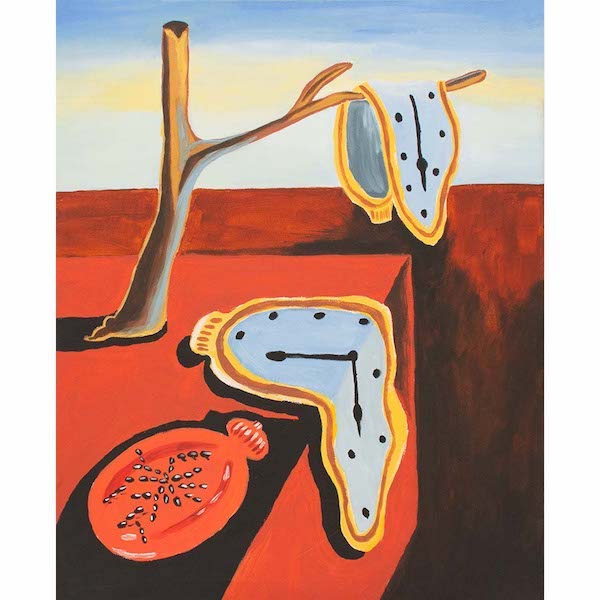
https://youtube.com/watch?v=5C3HrazvQJs%3Fcontrols%3D1%26rel%3D0%26playsinline%3D0%26modestbranding%3D0%26autoplay%3D0%26enablejsapi%3D1%26origin%3Dhttps%253A%252F%252Fwww.weloveart.com%26widgetid%3D13
The Persistence
Salvador Dalí was a Spanish Surrealist artist renowned for his technical skill, precise draftsmanship and the striking and bizarre images in his work.
Born in Figueres, Catalonia, Dalí received his formal education in fine arts at Madrid. Influenced by Impressionism and the Renaissance masters from a young age, he became increasingly attracted to Cubism and avant-garde movements. He moved closer to Surrealism in the late 1920s and joined the Surrealist group in 1929, soon becoming one of its leading exponents. From 1929 to 1937 he produced the paintings which made him the world’s best-known Surrealist artist. He depicted a dream world in which commonplace objects are juxtaposed, deformed, or otherwise metamorphosed in a bizarre and irrational fashion. Dalí portrayed those objects in meticulous, almost painfully realistic detail and usually placed them within bleak sunlit landscapes that were reminiscent of his Catalonian homeland. Perhaps the most famous of those enigmatic images is The Persistence of Memory (1931), in which limp melting watches rest in an eerily calm landscape.
The 10 most famous artists of all time
Dalí lived in France throughout the Spanish Civil War (1936 to 1939) before leaving for the United States in 1940 where he achieved commercial success. He returned to Spain in 1948 where he announced his return to the Catholic faith and developed his “nuclear mysticism” style, based on his interest in classicism, mysticism and recent scientific developments.
Dalí’s artistic repertoire included painting, graphic arts, film, sculpture, design and photography, at times in collaboration with other artists. He also wrote fiction, poetry, autobiography, essays and criticism. Major themes in his work include dreams, the subconscious, sexuality, religion, science and his closest personal relationships.
To the dismay of those who held his work in high regard, and to the irritation of his critics, his eccentric and ostentatious public behaviour often drew more attention than his artwork. His public support for the Francoist regime, his commercial activities and the quality and authenticity of some of his late works have also been controversial. His life and work were an important influence on other Surrealists, pop art and contemporary artists. There are two major museums devoted to his work: The Dalí Theatre-Museum in Figueres, Spain and the Salvador Dalí Museum in Florida. The Salvador Dalí Desert in Bolivia and the Dalí crater on the planet Mercury are named for him.
8. Andy Warhol (1928 – 1987)
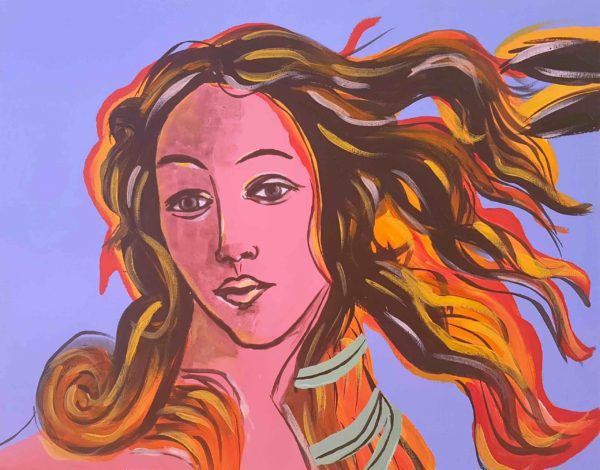
https://youtube.com/watch?v=d_lr6vs5qbc%3Fcontrols%3D1%26rel%3D0%26playsinline%3D0%26modestbranding%3D0%26autoplay%3D0%26enablejsapi%3D1%26origin%3Dhttps%253A%252F%252Fwww.weloveart.com%26widgetid%3D15
Birth Of Venus by Andy Warhol
Andy Warhol was an American artist, film director, and producer who was a leading figure in the visual art movement known as pop art. His works explore the relationship between artistic expression, advertising, and celebrity culture that flourished by the 1960s, and span a variety of media, including painting, silkscreening, photography, film, and sculpture. Some of his best known works include the silkscreen paintings Campbell’s Soup Cans (1962) and Marilyn Diptych (1962), the experimental film Chelsea Girls (1966), and the multimedia events known as the Exploding Plastic Inevitable (1966–67).
Born Andrew Warhola in the neighbourhood of Oakland in Pittsburgh, Pennsylvania, Warhol’s parents were Slovakian immigrants. Warhol initially pursued a successful career as a commercial illustrator. After exhibiting his work in several galleries in the late 1950s, he began to receive recognition as an influential and controversial artist. His New York studio, The Factory, became a well-known gathering place that brought together distinguished intellectuals, drag queens, playwrights, Bohemian street people, Hollywood celebrities and wealthy patrons.
Warhol pioneered the development of the process whereby an enlarged photographic image is transferred to a silk screen that is then placed on a canvas and inked from the back. Each Warhol silkscreen used this technique that enabled him to produce the series of mass-media images – repetitive, yet with slight variations – that he began in 1962. These iconic Andy Warhol prints, incorporating such items as Campbell’s Soup cans, dollar bills, Coca-Cola bottles, and the faces of celebrities, can be taken as comments on the banality, harshness, and ambiguity of American culture.
On June 3, 1968, radical feminist writer Valerie Solanas shot Warhol and Mario Amaya, art critic and curator, at Warhol’s studio. Amaya received only minor injuries and was released from the hospital later the same day. Warhol was seriously wounded by the attack and barely survived. He suffered physical effects for the rest of his life, including being required to wear a surgical corset. The shooting had a profound effect on Warhol’s life and art.
He lived openly as a gay man before the gay liberation movement. After gallbladder surgery, Warhol died of cardiac arrhythmia in February 1987 at the age of 58. The Andy Warhol Museum in his native city of Pittsburgh is the largest museum in the United States dedicated to a single artist.
9. René François Ghislain Magritte (1898 – 1967)
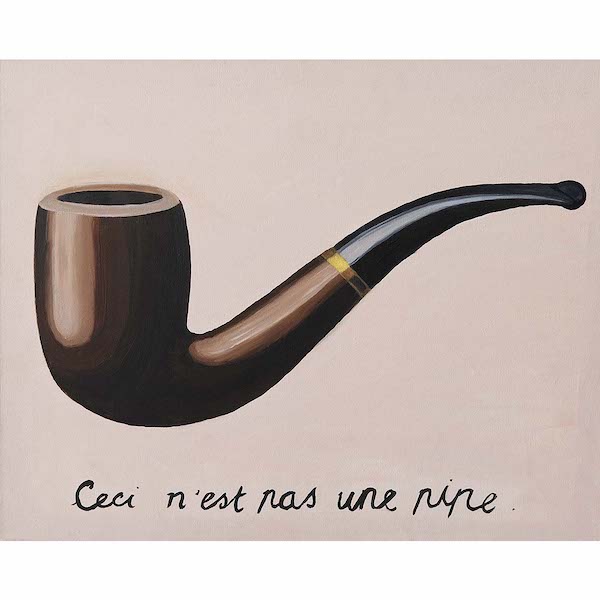
The Treachery of Images by René Magritte
René Magritte was a Belgian-born artist who was known for his work with surrealism as well as his thought-provoking images. After attending art school in Brussels, he worked in commercial advertising to support himself while he experimented with his painting. In the 1920s, he began to paint in the surrealist style and became known for his witty images and his use of simple graphics and everyday objects, giving new meanings to familiar things. With a popularity that increased over time, Magritte was able to pursue his art full-time and was celebrated in several international exhibitions. He experimented with numerous styles and forms during his life and was a primary influence on the pop art movement.
Placing familiar, mundane objects such as bowler hats, pipes and rocks in unusual contexts and juxtapositions, Magritte evoked themes of mystery and madness to challenge the assumptions of human perception. With early works such as The Lost Jockey and The Menaced Assassin, Magritte quickly became one of the most important artists in Belgium and found himself at the centre of its nascent surrealist movement. But when his first one-man show—in 1927 at the Galerie le Centaure—was poorly received, a disheartened Magritte left his homeland for France.
He moved to Paris to be closer to the French Surrealist group. His three years there would be the most prolific of his life. Surrealism, a movement led by André Breton, sought to liberate the mind by subverting rational thought and giving free rein to the unconscious. A signal development of Magritte’s time in Paris was his word-paintings, in which he sought to investigate the relationship between text and image, often breaking apart well-worn connections between the two. Magritte also explored other media during this time, making a series of short films that featured his wife, Georgette, as well as experimenting with sculpture.
Despite having been diagnosed with pancreatic cancer in 1963, Magritte was able to travel to New York City for a 1965 retrospective of his work at the Museum of Modern Art. After a period of prolonged illness, on August 15, 1967, Magritte died at the age of 68. His work proved to be a primary influence on pop artists such as Andy Warhol and has since been celebrated in countless exhibitions around the world. The Magritte Museum opened in Brussels in 2009.
10. Henri Matisse (1869 – 1954)
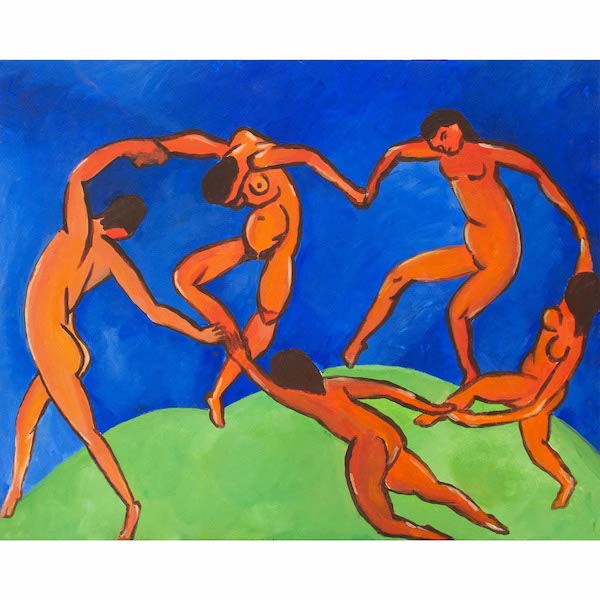
The 10 most famous artists of all time
Dance by Henri Matisse
Henri Émile Benoît Matisse was a French artist, known for both his use of colour and his fluid and original draughtsmanship. He was a draughtsman, printmaker, and sculptor, but is known primarily as a painter. Matisse is commonly regarded, along with Pablo Picasso, as one of the artists who best helped to define the revolutionary developments in the visual arts throughout the opening decades of the twentieth century, responsible for significant developments in painting and sculpture.
He first started to paint in 1889, after his mother brought him art supplies during a period of convalescence following an attack of appendicitis. He discovered “a kind of paradise” as he later described it, and decided to become an artist, deeply disappointing his father.In 1891, he studied art in Paris at the Académie Julian. Initially he painted still-lifes and landscapes in a traditional style, at which he achieved reasonable proficiency.
His breakthrough as an artist came during the summers of 1904 and 1905, when the bright sunlight of the South of France inspired him to create optically dynamic works of bright, clashing colours that led to him, along with artists like André Derain and Maurice de Vlaminck, being derided with the epithet fauves (wild beasts). Known as Fauvism, the work from this period set him on a career-long path that he described as “construction by coloured surfaces.” This approach remained central through the various stages of Matisse’s body of work. Though much of his work—whether an ink drawing with a flowing arabesque line or a painting with flat expanses of unmodulated color—looks as if it might have been executed with effortless ease, Matisse cautioned that this effect was only an “apparent simplicity.” In reality, he laboured exactingly to achieve the “art of balance, of purity and serenity” of which he dreamed.
During the last years of his life, he was a rather solitary man who was separated from his wife and whose grown-up children were scattered. After 1941, when he underwent an operation for an intestinal disorder, he was bedridden much of the time; after 1950 he suffered from asthma and heart trouble. Cared for by a faithful Russian woman who had been one of his models in the early 1930s, he lived in a large studio in the Old Hôtel Regina at Cimiez, overlooking Nice. Often he was obliged to work on his mural-sized projects from a studio bed with the aid of a crayon attached to a long pole. But there are no signs of flagging creative energy or of sadness in his final achievements. On the contrary, these works are among the most daring, most accomplished, and most serenely optimistic of his entire career. His mastery of the expressive language of colour and drawing, displayed in a body of work spanning over a half-century, won him recognition as a leading figure in modern art.

